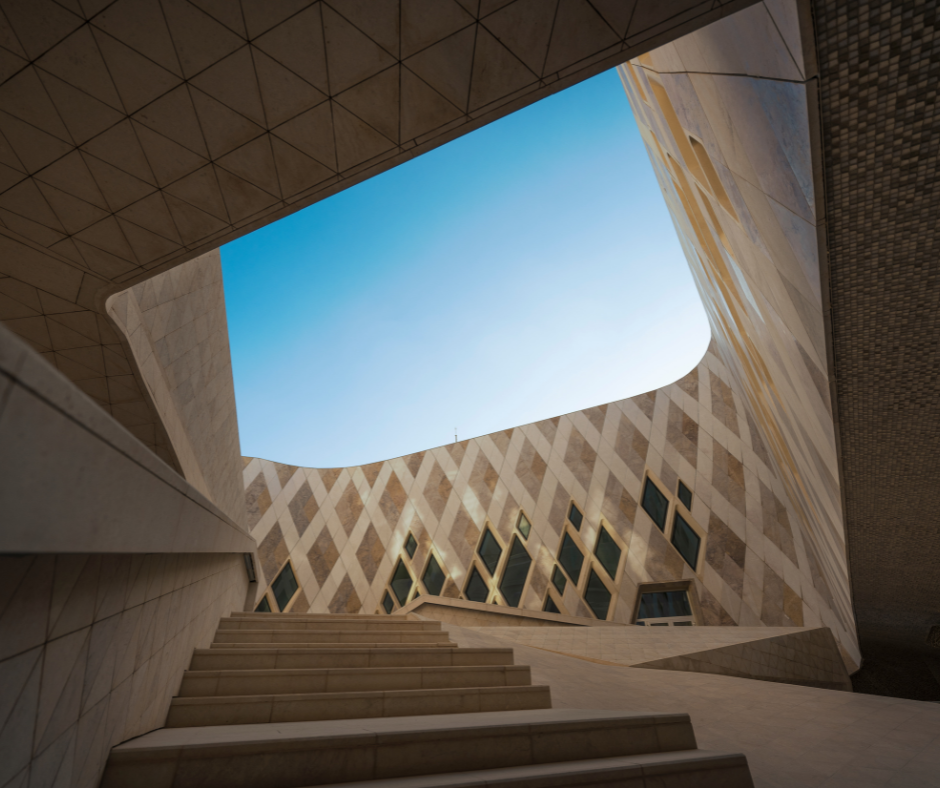

Architects in Business: Architecture Associations for Students and Professionals
Summary
Reflection Questions
Journal Prompt
Professional organizations play a pivotal role in shaping the careers and practices of architects and architectural designers. These entities serve not only as custodians of industry standards and ethical practices but also as vital platforms for networking and professional development for licensed architects and students. From the Society of Landscape Architects to the AIA, they provide architects with access to a wealth of resources, including educational programs, policy advocacy, and collaborative opportunities, which are essential for staying abreast of evolving trends and technologies in architecture. The significance of these organizations extends beyond individual professional growth, influencing the broader architectural landscape through the establishment of best practices and the promotion of innovative design principles. In this article, we take a look at a few of the many professional organizations within architecture, exploring their contributions and the benefits they offer to professionals in the field. Whether you are a professional in the architecture, landscape architecture, or architectural design industry, read on to learn more!
The Role of Professional Organizations in Architecture


Professional organizations in architecture significantly influence the field by acting as central hubs for the dissemination of knowledge and the promotion of best practices. They serve as influential voices in setting the direction for architectural discourse, often leading the way in adopting and advocating for new design philosophies and technologies.
These organizations provide a platform for architects to collaborate, share ideas, and engage in critical discussions, fostering a community that spans geographical and cultural boundaries. Through conferences, publications, and online forums, they enable the exchange of innovative ideas and the latest research findings, thereby continually advancing the field.
Additionally, they play a crucial role in representing the interests and concerns of architects, acting as intermediaries between the profession and governmental bodies, educational institutions, and the public.
The Impact of These Organizations on Industry Standards, Ethics, and Professional Practices


Professional architectural organizations are instrumental in establishing and upholding industry standards and ethics. They develop guidelines and codes of conduct that define professional responsibility and ethical behavior, ensuring the integrity and credibility of the profession. These standards cover a wide range of aspects, from design excellence and sustainability to client relationships and public safety, setting benchmarks for professional practice.
Moreover, these organizations are involved in the accreditation of educational programs in architecture, ensuring that the training of new architects aligns with the current needs and expectations of the profession. They also play a critical role in advocating for policies and regulations that impact architectural practice and the built environment.
By influencing legislation and building codes, they contribute to the creation of safer, more sustainable, and aesthetically pleasing spaces. In essence, professional organizations in architecture are not only guardians of the profession’s standards and ethics but also catalysts for growth and innovation, shaping the practice of architecture at both individual and collective levels.
Key Global and Regional Architectural Organizations
Overview of Major Global Organizations


The International Union of Architects (UIA) stands as a foremost global organization in the field of architecture. Founded in 1948, the UIA represents over a million architects worldwide through its member sections in over 100 countries. It functions as a platform for professional architects across the globe, fostering dialogue and collaboration on issues that have a worldwide impact.
The UIA’s activities include organizing world congresses, working on international competitions, and issuing statements and charters that guide architectural practices globally. One of its significant roles is to promote architectural education and to set international standards for the recognition of architectural qualifications, ensuring consistency in the quality of architectural services around the world. The UIA also actively engages in advocacy on global issues like sustainable development, urbanization, and cultural heritage preservation.
Description of Regional Organizations in Different Parts of the World


Apart from global organizations like the UIA, various regional architectural organizations play pivotal roles in specific parts of the world. In Europe, for instance, the Architects’ Council of Europe (ACE) represents the interests of over half a million architects from 31 countries. It focuses on issues related to architectural policy in Europe, including professional practice, sustainability, and the quality of the built environment.
In North America, organizations such as the American Institute of Architects (AIA) and the Royal Architectural Institute of Canada (RAIC) are instrumental in shaping architectural practices and policies. These organizations provide resources, education, and advocacy on behalf of architects in their respective countries.
In Asia, the Architects Regional Council Asia (ARCASIA) is a significant body that facilitates collaboration and information exchange among architects in Asian countries. It focuses on fostering professional excellence and addressing challenges unique to the Asian context, such as rapid urbanization and climate change.
Similarly, in Africa, the African Union of Architects (AUA) plays a crucial role in promoting architectural excellence and addressing issues relevant to the African continent, such as sustainable development and urban planning.
These regional organizations work within specific cultural and geographical contexts, addressing local challenges and opportunities while contributing to the global discourse on architecture. They provide a crucial link between global perspectives and local practices, ensuring that the field of architecture remains dynamic and responsive to diverse needs and conditions.
National Organizations and Their Impact
Detailed Information on Prominent National Organizations


National architectural organizations play a critical role in representing and supporting the architectural profession within their respective countries. Two prominent examples are the American Institute of Architects (AIA) in the United States and the Royal Institute of British Architects (RIBA) in the United Kingdom.
The American Institute of Architects, established in 1857, is a leading professional organization for architects in the United States. With over 95,000 members, the AIA advocates for the value of architecture and provides architects with the resources they need for continued professional development. It offers a range of services, including educational programs, design competitions, and a code of ethics and professional conduct that its members are expected to follow.
The Royal Institute of British Architects, founded in 1834, plays a similar role in the United Kingdom. It has a membership of over 44,000 and aims to drive excellence in architecture. RIBA provides support to its members through training, technical advice, research opportunities, and a variety of professional and architectural services. It also plays a significant role in championing British architecture internationally.
Their Role in Shaping National Architectural Standards and Policies
National organizations such as the AIA and RIBA are influential in shaping architectural standards and policies within their countries. They work closely with governmental bodies and industry stakeholders to advocate for policies that benefit the architectural profession and the quality of the built environment. This includes involvement in the development of building codes and regulations, sustainability standards, and urban planning policies.
These organizations also play a key role in setting educational standards for the profession. They accredit architectural education programs, ensuring that these programs meet the necessary criteria to prepare students for professional practice. This accreditation process is crucial for maintaining the quality and consistency of architectural education nationally.
Furthermore, these organizations often undertake research initiatives to inform public policy, provide guidance on best practices, and address contemporary challenges in the field. By doing so, they help to ensure that the architectural profession remains relevant and responsive to changing societal needs and technological advancements. The influence of these national organizations extends beyond their immediate members, impacting the broader architectural community, clients, and the general public.
Specialized Organizations for Niche Areas
Introduction to Organizations Focusing on Specific Areas of Architecture


Beyond the broad-based national and international architectural organizations, there are numerous specialized groups focusing on specific niche areas within architecture. These organizations cater to specialized fields like sustainable design, historical preservation, and urban planning, providing targeted support and development in these areas.
For instance, organizations dedicated to sustainable design, such as the U.S. Green Building Council (USGBC), focus on promoting environmentally responsible and resource-efficient building practices. The USGBC is known for developing the LEED (Leadership in Energy and Environmental Design) certification system, which has become a globally recognized standard for measuring building sustainability.
Historical preservation is another niche area with dedicated organizations like the National Trust for Historic Preservation in the United States. These organizations work to protect and preserve buildings and sites of historical significance, advocating for policies that support preservation efforts and educating the public and professionals about the importance of conserving architectural heritage.
In the realm of urban planning, groups like the American Planning Association (APA) provide a platform for professionals who focus on the development and design of urban spaces. These organizations address issues ranging from urban sprawl to community planning and play a crucial role in shaping the livability and functionality of urban environments.
How These Organizations Support and Develop Their Specific Niches
Specialized architectural organizations support and develop their niches by providing focused research, education, advocacy, and community engagement specific to their area of expertise. In sustainable design, organizations engage in developing and updating standards and certifications that guide eco-friendly building practices. They conduct research on sustainable materials and technologies and offer educational programs and resources to architects and builders to promote sustainable practices in the industry.
For historical preservation, these organizations often work on conserving and documenting historical structures, advocating for legal protections, and raising public awareness about the cultural and historical value of preservation. They may offer grants, technical assistance, and guidance to support preservation projects and to ensure that renovation efforts maintain the integrity and character of historical sites.
Urban and regional planning organizations focus on the broader picture of how buildings and spaces interact within urban settings. They provide resources and training on urban design principles, community engagement, and policy development. By influencing policy and advocating for community-centered planning, they contribute to creating more equitable, sustainable, and livable urban environments.
These specialized organizations, through their focused efforts, not only contribute to the advancement of their specific fields within architecture but also enrich the broader architectural discourse by bringing specialized knowledge and perspectives to the table.
Networking and Professional Development Opportunities


Professional organizations in architecture play a critical role in facilitating networking and fostering connections within the architecture community. They create platforms where architects, both emerging and established, can meet, exchange ideas, and form professional relationships. Networking events, such as conferences, seminars, and meet-ups, are frequently organized, offering members opportunities to interact with peers, mentors, and industry leaders.
These organizations also often have local chapters or special interest groups, which provide more intimate settings for networking and community building. Through these chapters, members can engage with others in their geographic area or specialty, fostering a sense of community and collaboration. Online forums and social media platforms further extend these networking opportunities, allowing members to connect and engage with a broader architectural community beyond physical events.
Opportunities for Professional Development, Including Conferences, Workshops, and Continuing Education
Professional development is a key aspect of the offerings of architectural organizations. These entities provide a wealth of opportunities for continuous learning and skill enhancement. Conferences and workshops are common, featuring talks and presentations by experts in various fields of architecture. These events cover a wide range of topics, from emerging architectural technologies and sustainability practices to business management and design trends.
Continuing education is another crucial element, with many organizations offering courses and webinars that allow architects to stay updated with the latest developments in the field and maintain their professional certifications. Some organizations also provide access to exclusive research, case studies, and publications, which serve as valuable educational resources.
In addition to formal educational opportunities, mentorship programs are often available, enabling less experienced architects to learn from seasoned professionals. These programs not only help in skill development but also provide guidance on career advancement and navigating the challenges of the profession.
Through these various channels, architectural organizations play a significant role in ensuring that professionals in the field have access to the knowledge and skills necessary to thrive and adapt in an ever-evolving industry.
Advocacy and Public Policy
Professional architectural organizations significantly contribute to advocacy and public policy, playing a vital role in shaping the discourse and decisions that impact the built environment. These organizations often serve as the collective voice of architects, ensuring that the concerns and perspectives of the profession are represented in public policy discussions and decision-making processes.
One of the key areas of advocacy involves legislative and regulatory matters. Architectural organizations actively engage with governmental bodies at various levels to influence legislation and regulations that affect the practice of architecture. This includes building codes, zoning laws, sustainability standards, and public safety regulations. By participating in these discussions, they ensure that architectural standards are aligned with public interest and contemporary challenges.
In addition to influencing legislation, these organizations often take a proactive role in shaping public policy on urban planning and development. They advocate for policies that promote sustainable and responsible development, considering factors like environmental impact, community needs, and economic viability. This advocacy is crucial in addressing current global challenges such as climate change, urbanization, and social equity in urban spaces.
Furthermore, these organizations engage in public outreach and education to raise awareness about the value of good design and the importance of architecture in everyday life. Through public campaigns, exhibitions, and educational programs, they aim to increase public understanding and appreciation of architecture and design, fostering a greater awareness of the role that architecture plays in shaping the quality of life in our communities.
Overall, the involvement of architectural organizations in advocacy and public policy not only safeguards the interests and integrity of the profession but also ensures that architecture continues to contribute positively to societal development and the creation of sustainable, functional, and aesthetically pleasing environments.
Membership Benefits and Requirements


Joining a professional architectural organization comes with a myriad of benefits that can significantly enhance an architect’s career and professional growth. One of the primary advantages is access to a wealth of resources. Members often have exclusive access to research publications, design tools, and architectural databases that can provide invaluable information for both practice and study.
Professional recognition is another significant benefit. Membership in a respected organization adds credibility and prestige to an architect’s profile, which can be particularly beneficial for those starting their careers or establishing independent practices. This recognition often extends to awards and competitions hosted by these organizations, offering opportunities for professional distinction.
Networking opportunities, as previously discussed, are a major draw for membership. These interactions can lead to collaborative projects, mentorship relationships, and job opportunities. Many organizations have job boards and career resources exclusively available to members, providing a direct link to potential employers and openings in the field.
Continuing education and professional development opportunities are also key benefits. Members can participate in workshops, seminars, and conferences, often at discounted rates. These events not only contribute to ongoing learning but also help members fulfill continuing education requirements necessary for maintaining licensure.
Membership Requirements and Levels for Different Organizations
Membership requirements for architectural organizations can vary significantly depending on the organization’s focus and stature. Generally, these requirements are designed to ensure that members have a certain level of education and professional expertise in architecture.
Basic membership typically requires a degree in architecture from an accredited institution. For higher levels of membership or for certain specialized organizations, additional criteria such as licensure, a certain number of years of professional experience, or specific expertise may be required. For instance, becoming a licensed architect is often a prerequisite for full membership in national organizations like the AIA or RIBA.
Many organizations also offer different levels of membership. For example, there are categories for students, associates (those who have completed their education but are not yet licensed), and fellows (members recognized for exceptional contributions to the profession). Each level comes with its own set of benefits, responsibilities, and dues.
It’s also worth noting that some specialized organizations might require evidence of work or interest in a particular area of architecture, such as sustainable design or historical preservation. This ensures that the organization’s resources and efforts are concentrated among professionals who are actively engaged in that specific field.
While requirements for membership can vary, they are typically structured to include a range of design professionals from students to seasoned architects, ensuring a dynamic and diverse community within the organization.
Final Thoughts on Joining Professional Associations as Architects, Landscape Architects, and Architecture Students


Professional organizations play an indispensable role in the field of architecture, offering architects and architectural designers a platform for professional growth, networking, and advocacy. These organizations not only uphold industry standards and ethics but also provide a collective voice in shaping public policy and architectural discourse. Whether a large national organization or a specialized association dedicated to promoting minority architects, they are committed to supporting architects.
The benefits of membership, ranging from access to exclusive resources and job opportunities to professional recognition, significantly contribute to an architect’s career development and success. For students, insight into the careers of established licensed architects can serve as a key part of their architecture education.
As such, it is highly beneficial for those with roles in architecture to consider joining and actively participating in a professional association. Active involvement not only enriches one’s own professional journey but also contributes to the advancement and vitality of the architectural community at large.








